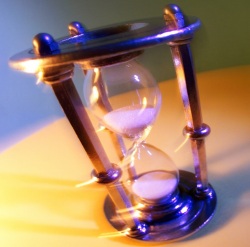
Cautions
Of course, like any effect, it’s easy to over do it.
When using a thickening effect, be careful not to push it too far forward in the mix. You can really muddle up the mix doing that.
Same goes for the echo effect. It should be really subtle, and you should definitely not use it on every song in the set.
Often times, I’ll use it only on the chorus, or I’ll change the delay time to very short during the verse and longer during the chorus.
Listen to the song, play with it and see what sounds good. Just be cautious of the effect being noticeable.
It should enhance the overall song, not become a focal point. Start with the levels really low and sneak it up to the point where you just hear it. Then stop.
Also, don’t try to run more than one vocal through a delay unit at once. People almost never sing in perfect sync, so when you start getting a little drift, and those voices get delayed, it can really mess with clarity.
Stick to a single delay line per vocal; I only use this effect on the worship leader.
Bonus Tip
On certain songs, it sounds really cool to run a high and low pass filter on the effect return. You’ll hear this in some popular music.
We do this in the delay itself on the SD8 because we can, but you can easily do it on the return channel. Because the sound will be very different from the original vocal sound, it’s more apparent so really watch the level. But it can be pretty sweet when you get it right
Sometimes getting a vocal to sit right in the mix can be tough. Turning it up doesn’t always help, and after you’ve applied some compression, EQ and perhaps even parallel compression, you may still want to round out the vocal sound a bit.
Mike Sessler is the technical director at Coast Hills Community Church in Aliso Viejo, CA. He has been involved in live production for over 20 years and is the author of the blog, Church Tech Arts . He also hosts a weekly podcast called Church Tech Weekly on the TechArtsNetwork.
